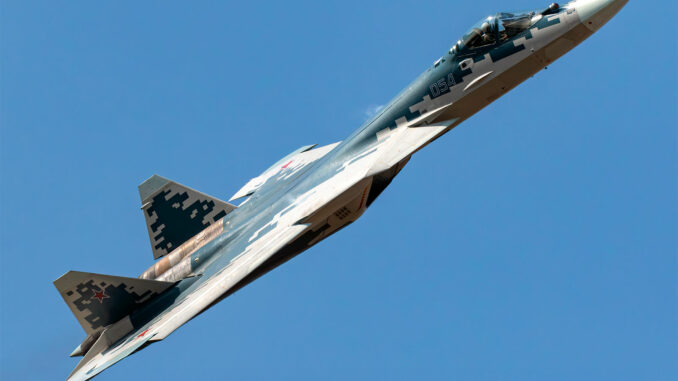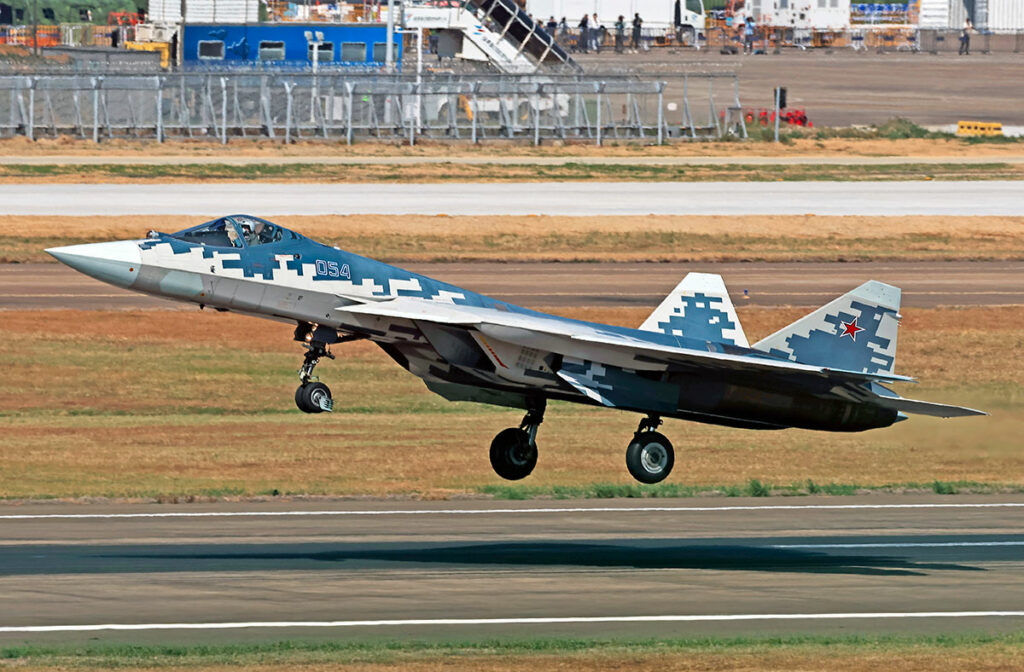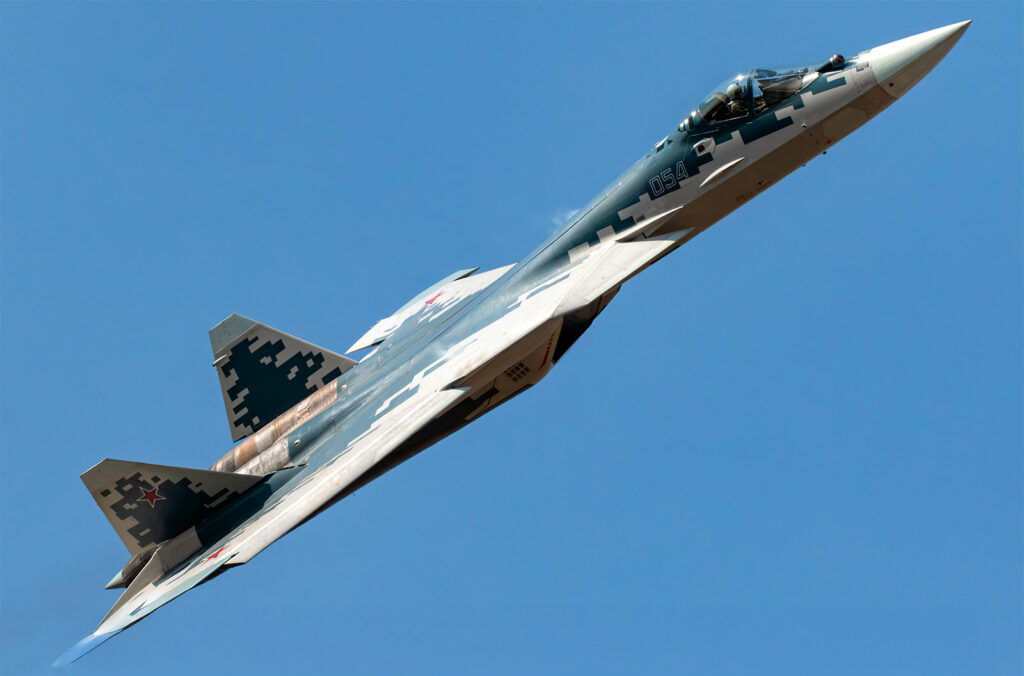
The N036 Belka radar of the Russian Su-57 remains poorly documented in Western databases due to its advanced design and the discretion surrounding its specifications.
An innovative radar architecture
The N036 Belka is an active electronically scanning array (AESA) radar system developed for the fifth-generation Sukhoi Su-57 fighter. It consists of several antennas strategically distributed over the aircraft:
- Main X-band antenna: Located in the nose of the aircraft, this elliptical antenna is 0.9 meters long by 0.7 meters wide and includes more than 950 transmitter-receiver (T/R) modules, with a total power output estimated at 12,000 watts.
Two lateral X-band antennas: Mounted on the sides of the front fuselage, each equipped with 404 T/R modules, they extend radar coverage and allow for increased surveillance of lateral areas.
- L-band antennas: Integrated into the wing leading edge extensions, these antennas are used for identification friend or foe (IFF) and have electronic warfare capabilities, particularly for detecting stealth targets.
This configuration provides 360-degree coverage, improving target detection and tracking in various frequency bands.

Stealth target detection capability
The L-band antennas of N036 Belka play a crucial role in the detection of stealth aircraft. Aircraft designed to evade X-band radars are often less effective against L-band radars, due to the longer wavelengths of the latter. Thus, the Su-57 can detect stealth targets at greater distances, although the resolution is lower than that of X-band radars.
Integration of passive systems
In addition to the N036 Belka radar, the Su-57 is equipped with a set of passive sensors, notably the 101KS-V optronic system, capable of detecting the infrared signatures of enemy aircraft at distances of 50 to 70 kilometers. The use of passive sensors allows the Su-57 to locate targets without emitting detectable signals, thus reducing the risk of being spotted.

Discretion and limited access to information
Russia maintains a strict confidentiality policy regarding the detailed specifications of its advanced weapon systems, including the N036 Belka radar. This discretion limits the availability of precise information in Western sources, making it difficult to fully evaluate the system’s capabilities. In addition, the available data often comes from open sources or speculation, which can affect its reliability.
The N036 Belka radar of the Su-57 represents a significant advance in aeronautical radar technology, combining a multi-band architecture, stealth target detection capabilities and the integration of passive sensors. The combination of these technologies, together with the confidentiality surrounding its specifications, explains the difficulty of finding detailed information on this system in Western databases.
War Wings Daily is an independant magazine.